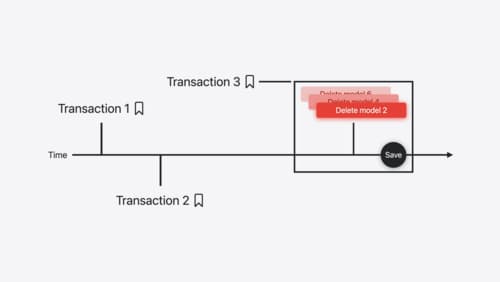How do I move from realm to swiftdata
Asked on 2024-07-31
1 search
To move from Realm to SwiftData, you can follow these steps based on the information provided in the WWDC sessions:
-
Understand SwiftData Basics:
- SwiftData is a framework introduced in iOS 17 that allows you to model and persist your app's data across all of Apple's platforms. It provides persistence, modeling, migration of your schema, graph management, and synchronization with CloudKit (What’s new in SwiftData).
-
Adopt SwiftData:
- To adopt SwiftData in your app, you need to import the framework and decorate each model with the
@Modelmacro. This macro is the powerhouse of SwiftData and helps in defining your schema (What’s new in SwiftData).
- To adopt SwiftData in your app, you need to import the framework and decorate each model with the
-
Custom Data Stores:
- SwiftData allows you to use custom data stores, which means you can configure it to use different backends like SQLite, a remote web service, or even JSON files. This flexibility can help you transition from Realm by configuring SwiftData to use a similar backend (Platforms State of the Union).
-
Implementing Custom Stores:
- You can implement a custom data store by changing the data store configuration. The new datastore protocol in SwiftData allows you to support any persistence backend, making it straightforward to adopt a custom store (Create a custom data store with SwiftData).
-
Track Model Changes:
- SwiftData provides a history API to track changes in your data store, which can be useful for syncing local changes to a remote service. This feature can help you manage data consistency during the transition from Realm to SwiftData (Track model changes with SwiftData history).
Relevant Sessions
- Platforms State of the Union
- Create a custom data store with SwiftData
- What’s new in SwiftData
- Track model changes with SwiftData history
By following these steps and utilizing the flexibility of SwiftData, you can effectively transition from Realm to SwiftData in your app.

Track model changes with SwiftData history
Reveal the history of your model’s changes with SwiftData! Use the history API to understand when data store changes occurred, and learn how to use this information to build features like remote server sync and out-of-process change handing in your app. We’ll also cover how you can build support for the history API into a custom data store.

Create a custom data store with SwiftData
Combine the power of SwiftData’s expressive, declarative modeling API with your own persistence backend. Learn how to build a custom data store and explore how to progressively add persistence features in your app. To get the most out of this session, watch “Meet SwiftData” and “Model your schema with SwiftData” from WWDC23.

Platforms State of the Union
Discover the newest advancements on Apple platforms.
